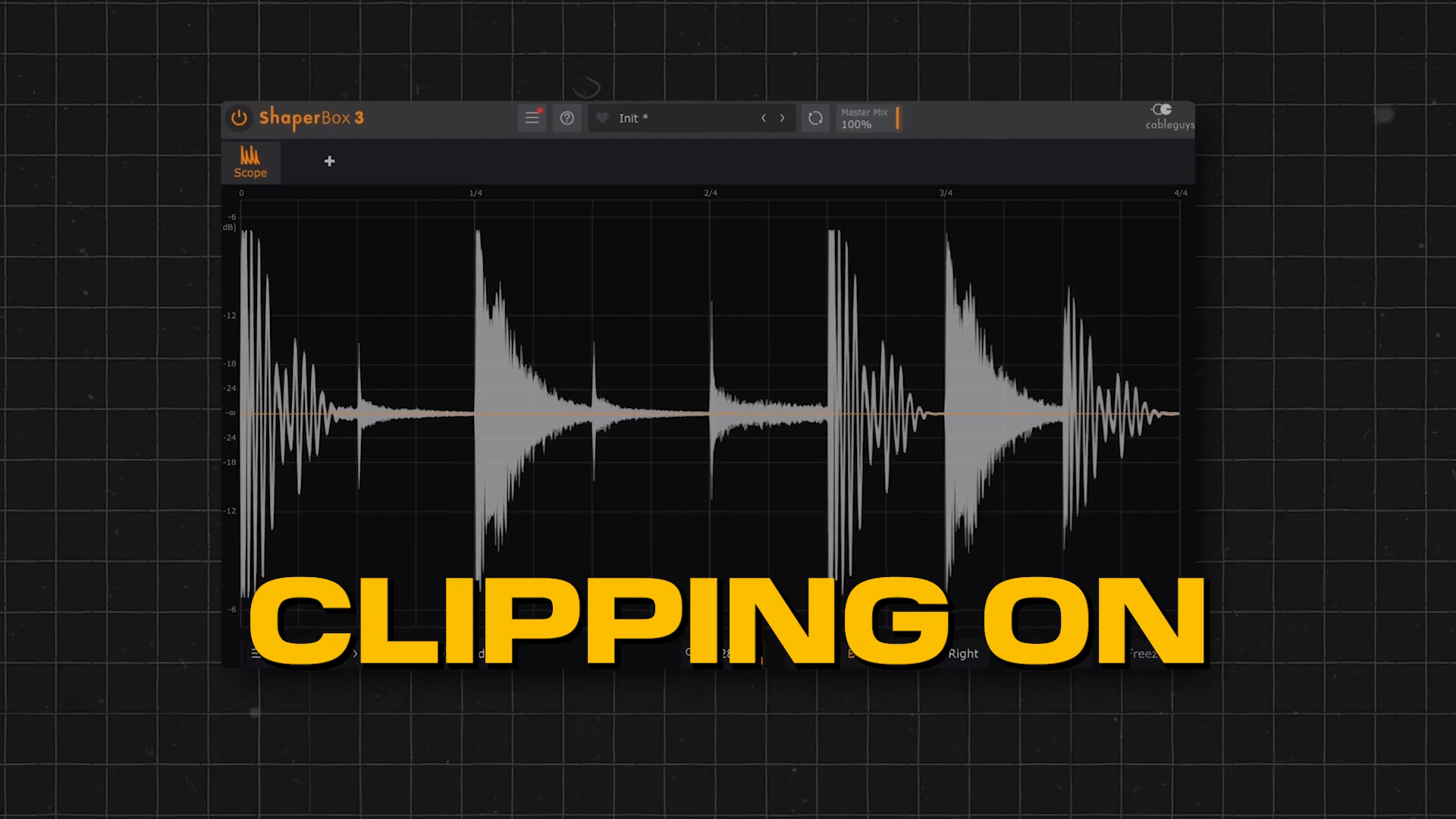Few Ableton Stock Devices
"After years of getting more and more plugins I finally figured out those two things:
- Truly unique plugins are RARE. New plugins are to solve yet another "major problem", but the truth is that there's already a tool that takes care of that.
- ...thats why if you just want to get things done and have fun with producing - USE STOCK PLUGINS. Sure, they won't replace that "analog character" but just like with third party plugins - stock Ableton devices are getting better and better"
Credit: @Zdrewe on YouTube
Intro
Key idea:Ableton stock devices can replace most third-party plugins for mixing and sound design tasks.Process / settings:Use built-in devices like Envelope Follower, Saturator, Glue Compressor, Hybrid Reverb, and Roar instead of expensive plugins.Result:Professional mixing results without additional plugin investments.Notes:Requires Ableton Live 12 for Roar device.
00:00 → 00:35
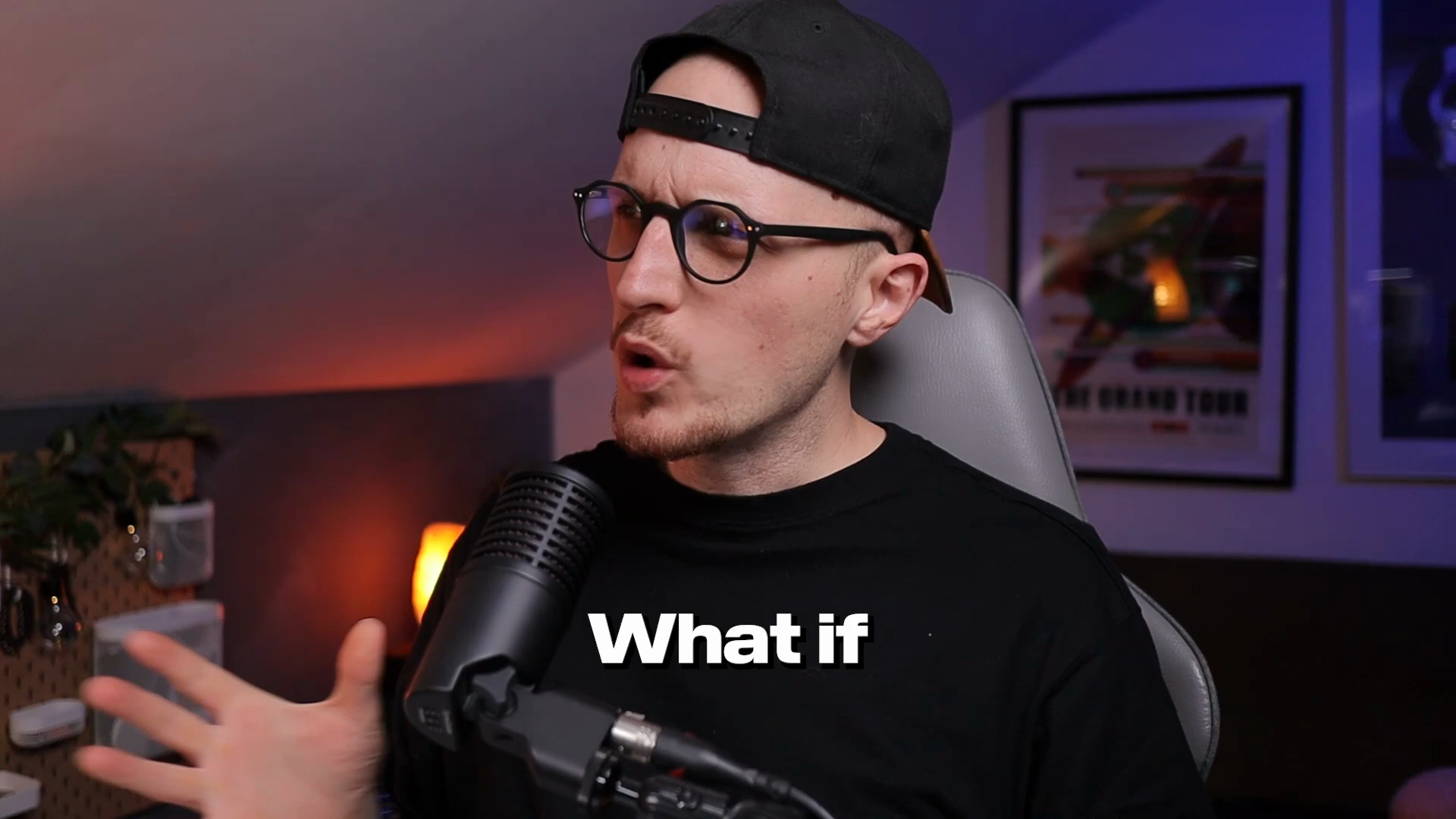
Cutting Frequencies - Sidechain with Envelope Follower
Key idea:Create dynamic frequency ducking on bass using Envelope Follower instead of purchasing sidechain plugins like Trackspacer or Fuser.Process / settings:- Place Envelope Follower on kick track
- Identify clashing frequencies using spectrum analyzer (in example:
74 Hzkick peak) - Add EQ8 band at the clashing frequency on bass channel
- Map Envelope Follower to EQ gain via modulation (M button)
- Set modulation range from
50%(flat) to0(full cut) - Adjust Q factor and bandwidth to taste
Result:Bass automatically ducks at kick frequencies when kick hits, maintaining low-end clarity without permanent frequency cuts.Notes:Superior to regular sidechain compression which can lose low-end. Alternative: use standard sidechain compression if dynamic EQ is too complex.
00:35 → 02:02
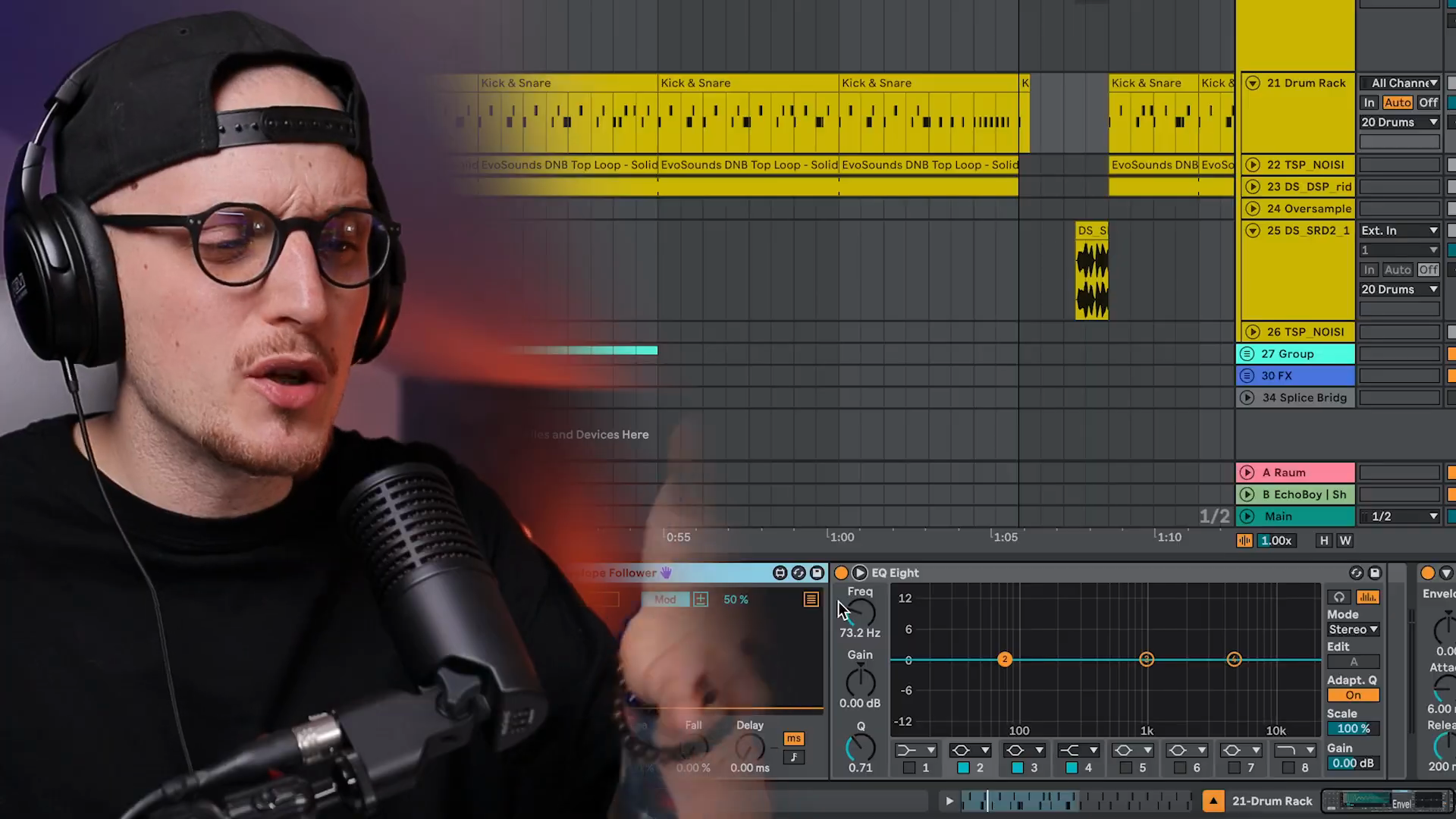
Sub Boom - Bass Enhancement
Key idea:Use Ableton's built-in Sub Boom device instead of third-party sub enhancers like RBass.Process / settings:- Add Sub Boom device to bass channel
- Adjust dry/wet knob to control effect amount
- Tune to song key (example:
G#) - Control tone brightness parameter
- Adjust pitch/size parameter for sub frequency range
- Modify decay time of the sub tail
Result:Enhanced sub-bass presence with tonal control and proper key tuning.Notes:Sub Boom offers brightness, pitch, and decay controls for precise sub shaping.
02:02 → 02:59
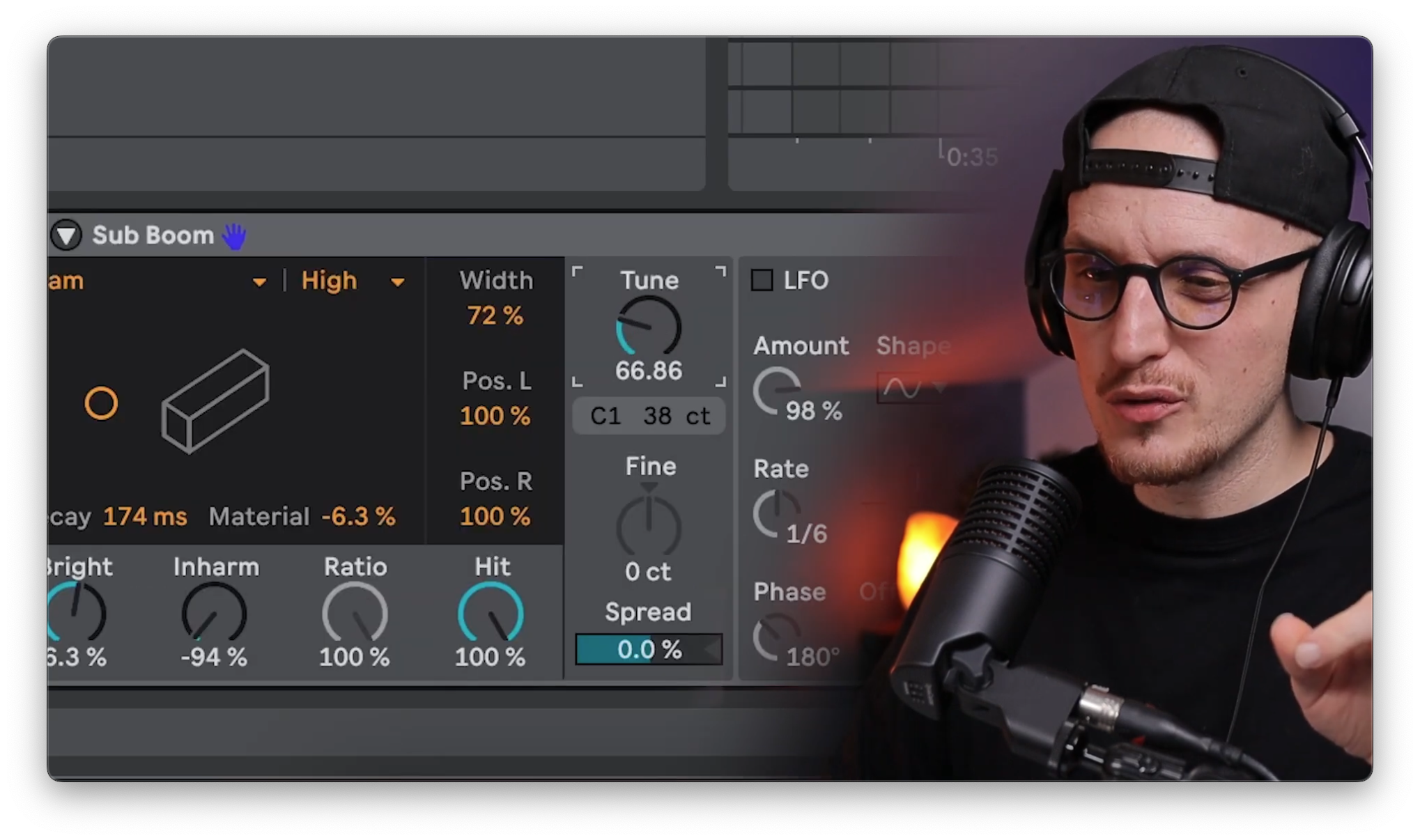
Compressor - Parallel Compression Technique
Key idea:Ableton's Glue Compressor excels at parallel compression with proper attack control for drum processing.Process / settings:- Use basic compressor for standard compression tasks
- Use Glue Compressor specifically for parallel drum compression
- Control transient response via attack knob
- Slower attack preserves more transients
- Faster attack removes transients
- Avoid blindly slamming threshold to maximum
Result:Controlled, punchy drums with preserved or shaped transients depending on attack setting.Notes:Attack time is the key parameter for controlling drum character in parallel compression. Don't just slam threshold and hope for good results.
02:59 → 04:06
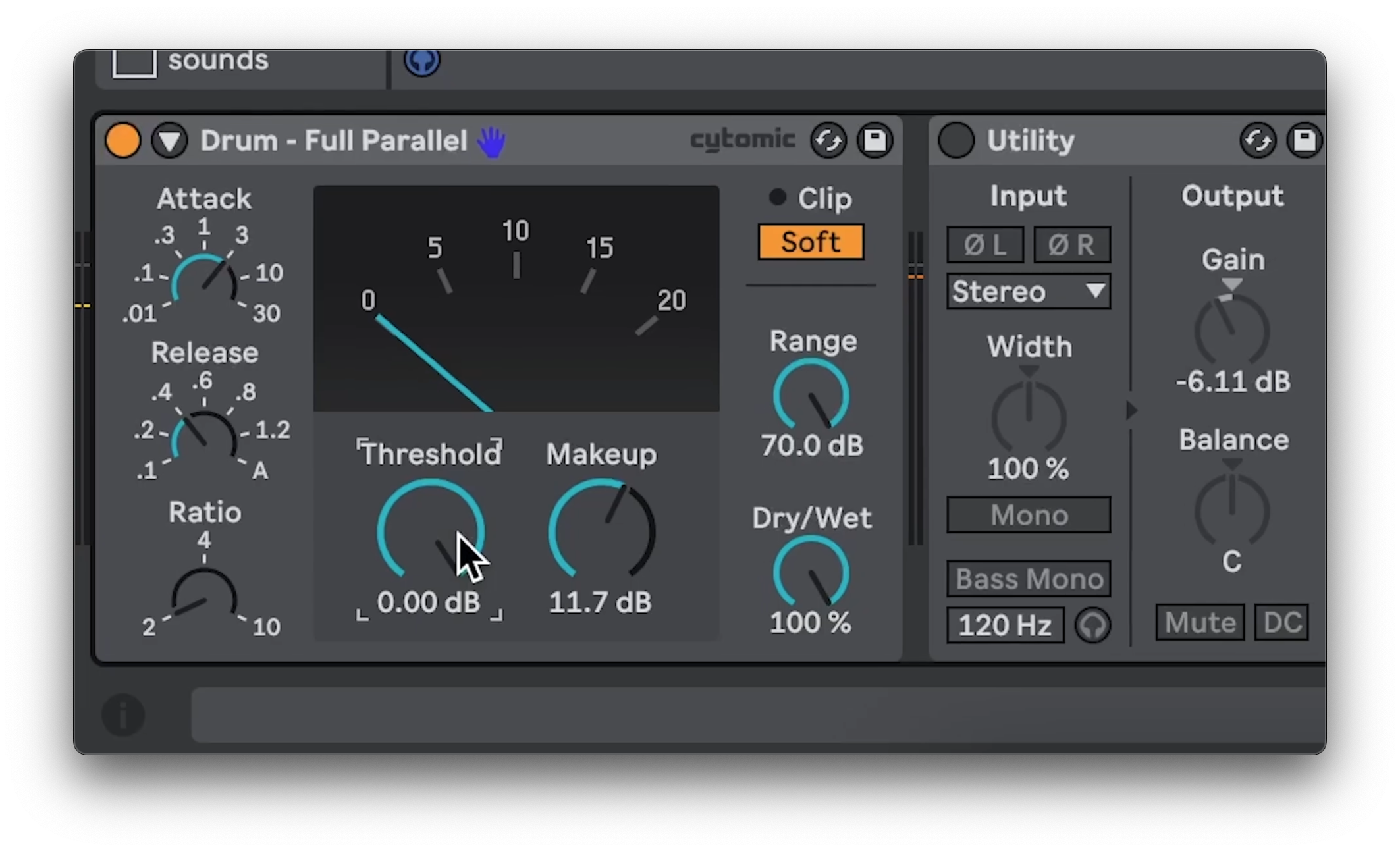
Roar - Multiband Waveshaping
Key idea:Roar is Ableton Live 12's built-in multiband waveshaper, replacing expensive saturation plugins like Saturn.Process / settings:- Access via stock Ableton preset called "Ott" (don't use third-party Ott plugin)
- Choose from multiple waveshaper algorithms (example: Fractal, Style Clipper, Soft Sign)
- Enable multiband mode with three bands: low, mid, high
- Apply different shapers to each band independently
- Two crossover points for band separation
- Access modulation via mod sources:
2 LFOs,envelope follower,noise modulator - Modulate parameters via modulation matrix
Result:Complex harmonic shaping with independent frequency band processing and dynamic modulation capabilities.Notes:Exclusive to Live 12. Crossover flexibility is limited to two points. Full modulation matrix available for creative sound design. Alternative to spending$130on saturation plugins.
04:06 → 05:43
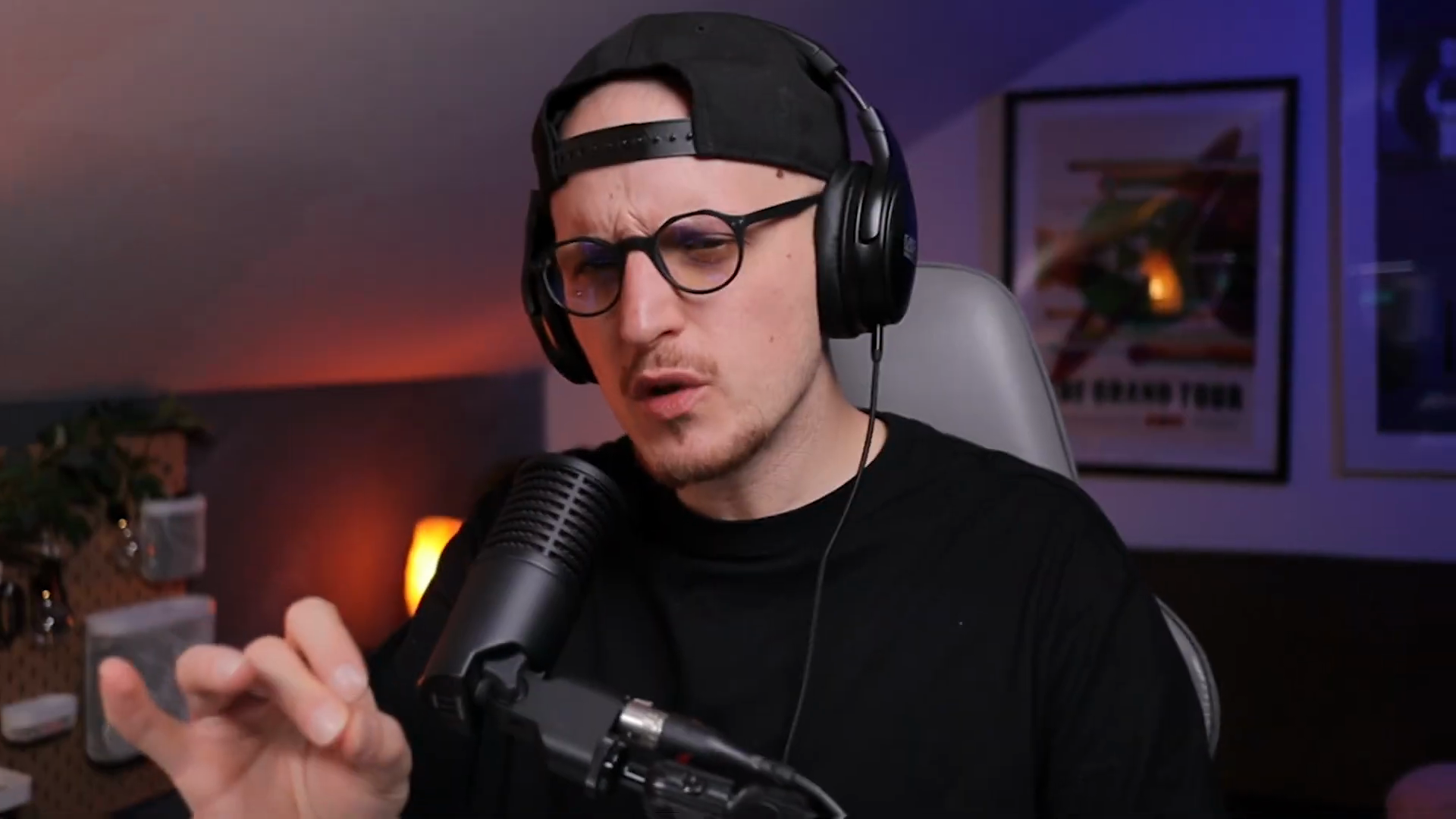
Clipper - Saturator as Soft Clipper
Key idea:Use Saturator with soft clip engaged as a clipper for transient shaping and loudness.Process / settings:- Add Saturator device
- Enable soft clip button
- Drive the input signal
- Use gain matching via Utility before or makeup gain after
- Monitor output meter for clipping indication (example: kick peaking at
-6 dB) - Watch waveform shape change during clipping
Result:Controlled soft clipping that shapes transients and increases perceived loudness without harsh distortion.Notes:Saturator can lean more toward saturation character. For pure clipping, Glue Compressor method may be preferable.
05:43 → 06:22

Glue Compressor - Alternative Soft Clipper
Key idea:Glue Compressor can function as a transparent soft clipper when compression is disabled.Process / settings:- Add Glue Compressor
- Turn range knob down (disables compression)
- Enable soft clip button
- Drive signal using Utility before compressor OR use makeup gain on compressor
- Use Utility after for gain matching
- Monitor clipping indicator
Result:Transparent soft clipping with minimal coloration, focusing on transient control and loudness.Notes:Cleaner clipping alternative to Saturator method. Watch transient shape changes during clipping.
06:22 → 07:00

Hybrid Reverb - Creative Reverb Design
Key idea:Hybrid Reverb combines convolution and algorithmic reverb, allowing custom impulse responses from any audio file.Process / settings:- Load any audio file (example: snare sample) as impulse response in convolution section
- Adjust blend knob to control convolution vs. algorithmic balance
- Use size parameter to change pitch of reverb tail
- Mix in algorithmic reverb section for additional character
- Create automation curves for reverb parameters (example: reverb throws)
- Copy and adjust automation points for varied effects
Result:Unique reverb textures impossible with standard reverbs, with dynamic automation for creative effects.Notes:More unique sounds than commonly-used Valhalla reverbs. Can use any WAV file as impulse response. Supports complex automation curves beyond basic reverb throws.
07:00 → 08:41
